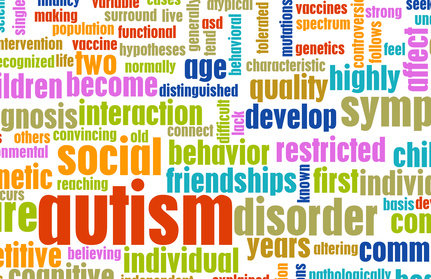One case decided by the Social Security Administration concerns individuals with disabilities who are subject to treatment that could lead to a restoration of their ability to work and whether they are required to follow their prescribed treatment plan to remain eligible for disability benefits.
 The Social Security Administration makes clear right away in this ruling that those who fail, without good cause, to follow treatment that can be expected to restore that person’s ability to work, cannot be found to be disabled.
The Social Security Administration makes clear right away in this ruling that those who fail, without good cause, to follow treatment that can be expected to restore that person’s ability to work, cannot be found to be disabled.
The first step before deciding whether this has occurred is determining whether there has been a failure to follow prescribed treatment. The SSA can declare that a failure has taken place only where all of the following conditions exist:
1. The evidence establishes that the individual’s impairment precludes engaging in any substantial gainful activity; and
2. The impairment has lasted or is expected to last for 12 continuous months from onset of disability or is expected to result in death; and
3. Treatment which is clearly expected to restore capacity to engage in any gainful activity has been prescribed by a treating source; and
4. The evidence of record discloses that there has been refusal to follow prescribed treatment.
If all of the above conditions are met and the person is found to have failed to follow a prescribed treatment, a determination must then be made as to whether the failure was justifiable.
The claimant or beneficiary should be given an opportunity to fully express the specific reason(s) for not following the prescribed treatment. Detailed questioning may be needed to identify and clarify the essential factors of refusal. The treating physician should also be contacted concerning the individual’s reasons for refusing treatment to clarify what the individual was told.
The following are examples of circumstances where a person’s failure to follow prescribed treatment will be seen as “justifiable” and thus will not preclude a finding of “disability”:
1. When the acceptance of a prescribed treatment would be contrary to the teachings of the claimant’s religion. In such a case, the claimant will be asked to identify church affiliation and provide a statement or other information from either church authorities or other members of the religious to substantiate that the individual is a member of the church. Additionally, the church’s position relative to medical treatment must be documented by obtaining either church literature or a statement from church authorities.
2. In an unusual case, a claimant’s fear of surgery may be so intense that it serves as a reason to not have surgery. However, lack of a guarantee that the surgery will be a success (something no doctor can provide) or fears based on stories of others who have failed to improve after similar surgery will not negate a finding of
“failure.”
3. A conflict among licensed medical doctors also serves as a valid reason for not pursuing a prescribed treatment. If a person has two treating sources who take opposing views regarding treatment, one recommending and one advising against the same treatment, failure to follow the recommended treatment is justifiable.
4. If the treatment carries a high degree of risk because of the enormity or unusual nature of the procedure that can be seen as a justifiable reason not to follow a prescribed treatment.
5. Finally, another justifiable reason is if the treatment recommended involves amputation of an extremity.
These are a sample of the most significant reasons why a refusal would be deemed justifiable, but there are other specific reasons that should be considered depending on the particular circumstances of your case.
If the decision to refuse treatment is not deemed justifiable, the SSA may decide to deny the disability claim or cease payment of benefits. However, before such a determination is made, the individual must be informed of this fact and of its effect on eligibility for benefits. The individual will be afforded an opportunity to undergo the prescribed treatment or to show justifiable cause for failing to do so.
Continue reading
 As 2013 makes its entrance a number of federal legislative changes affecting disability recipients will take effect. Included among those changes are the thresholds for what is considered “substantial gainful activity”, the maximum amount allowed for a worker retiring at full retirement age, the SSI federal payment standard and the estimated average monthly Social Security Benefits payable in January 2013.
As 2013 makes its entrance a number of federal legislative changes affecting disability recipients will take effect. Included among those changes are the thresholds for what is considered “substantial gainful activity”, the maximum amount allowed for a worker retiring at full retirement age, the SSI federal payment standard and the estimated average monthly Social Security Benefits payable in January 2013. Indiana Social Security Disability Attorney Blog
Indiana Social Security Disability Attorney Blog




 payments effective December 2012. The reason for the increase is due to an increase in the cost-of-living (COLA). Because of this increase, benefits for Social Security disability recipients will increase for 2013. The maximum benefit amount for monthly benefits in 2013 under the SSI program will be $710 for an eligible individual and $1,066 for an eligible individual with an eligible spouse. The maximum benefit amount for monthly benefits in 2013 under the Title II, SSDI program with be $1,132 for a disabled worker and $1,919 for a disabled worker, spouse, and one or more children (with the maximum monthly benefit topping out at $2,533 a month).
payments effective December 2012. The reason for the increase is due to an increase in the cost-of-living (COLA). Because of this increase, benefits for Social Security disability recipients will increase for 2013. The maximum benefit amount for monthly benefits in 2013 under the SSI program will be $710 for an eligible individual and $1,066 for an eligible individual with an eligible spouse. The maximum benefit amount for monthly benefits in 2013 under the Title II, SSDI program with be $1,132 for a disabled worker and $1,919 for a disabled worker, spouse, and one or more children (with the maximum monthly benefit topping out at $2,533 a month). Starting January 2, 2013, the local offices will close at noon on Wednesdays. So, as of that date, the hours will be 9-3 on Monday, Tuesday, Thursday and Friday and 9-noon on Wednesday.
Starting January 2, 2013, the local offices will close at noon on Wednesdays. So, as of that date, the hours will be 9-3 on Monday, Tuesday, Thursday and Friday and 9-noon on Wednesday. The concept of DST is really a ritual of setting clocks forward one hour in the spring so that during the warmer months there is less daylight in the morning and more daylight in the evening. This act is known as “springing forward”. In the fall, the reverse occurs; that is, clocks “fall back” by one hour.
The concept of DST is really a ritual of setting clocks forward one hour in the spring so that during the warmer months there is less daylight in the morning and more daylight in the evening. This act is known as “springing forward”. In the fall, the reverse occurs; that is, clocks “fall back” by one hour. This question was answered in the case of Odle v. Secretary of Health and Human Services, 788 F.2d 1158 (6th Cir. 1985). Joe Odle claimed he was entitled to disability benefits because he had arthritis in his left arm along with the serious tendon injury in that same arm (Joe had injured his left arm while lifting heavy boxes from a pallet to a tractor-trailer). When splinting did not relieve his pain, a doctor performed exploratory surgery, which revealed extensive problems with his left wrist. A series of treatments by the doctor left Joe with limited use of his left hand and arm due to severe pain. Joe testified that since the tractor accident he has experienced continuous pain in his left shoulder, arm, and hand, saying that his hand “tingles all the time.”
This question was answered in the case of Odle v. Secretary of Health and Human Services, 788 F.2d 1158 (6th Cir. 1985). Joe Odle claimed he was entitled to disability benefits because he had arthritis in his left arm along with the serious tendon injury in that same arm (Joe had injured his left arm while lifting heavy boxes from a pallet to a tractor-trailer). When splinting did not relieve his pain, a doctor performed exploratory surgery, which revealed extensive problems with his left wrist. A series of treatments by the doctor left Joe with limited use of his left hand and arm due to severe pain. Joe testified that since the tractor accident he has experienced continuous pain in his left shoulder, arm, and hand, saying that his hand “tingles all the time.” The Social Security Administration makes clear right away in this ruling that those who fail, without good cause, to follow treatment that can be expected to restore that person’s ability to work, cannot be found to be disabled.
The Social Security Administration makes clear right away in this ruling that those who fail, without good cause, to follow treatment that can be expected to restore that person’s ability to work, cannot be found to be disabled. Besides being a veteran or active duty member of the armed services, the Social Security Administration (SSA) says that those lawfully admitted for permanent residence under the Immigration and Nationality Act (INA) with a total of 40 credits of work in the United States are eligible to receive benefits. It is important to note that a spouse’s work hours may also count towards this number.
Besides being a veteran or active duty member of the armed services, the Social Security Administration (SSA) says that those lawfully admitted for permanent residence under the Immigration and Nationality Act (INA) with a total of 40 credits of work in the United States are eligible to receive benefits. It is important to note that a spouse’s work hours may also count towards this number. Current guidelines indicate that diagnosis of autism is proper when a patient shows at least six symptoms. Two of the symptoms ought to be linked to social interaction impairment, while one must be a communication impairment, and another one must be a restricted or repetitive behavior impairment. Communication impairment signs include a lack of responsiveness or strange gestures. Restrictive behavior can include purposeless movement as well as compulsive behavior such as rearranging objects and needing to control the physical environment. Ritual behavior is also a typical symptom of autism; people often need to do things the same way and at the same time everyday.
Current guidelines indicate that diagnosis of autism is proper when a patient shows at least six symptoms. Two of the symptoms ought to be linked to social interaction impairment, while one must be a communication impairment, and another one must be a restricted or repetitive behavior impairment. Communication impairment signs include a lack of responsiveness or strange gestures. Restrictive behavior can include purposeless movement as well as compulsive behavior such as rearranging objects and needing to control the physical environment. Ritual behavior is also a typical symptom of autism; people often need to do things the same way and at the same time everyday. According to the Social Security Administration’s Fact Sheet, you must prove that the symptoms of your CFS prevent you from working in order to qualify for disability benefits. To make this determination, the SSA will use the medical evidence you have provided in support of your claim to evaluate whether your symptoms reach the level of severity necessary to qualify for disability.
According to the Social Security Administration’s Fact Sheet, you must prove that the symptoms of your CFS prevent you from working in order to qualify for disability benefits. To make this determination, the SSA will use the medical evidence you have provided in support of your claim to evaluate whether your symptoms reach the level of severity necessary to qualify for disability.




